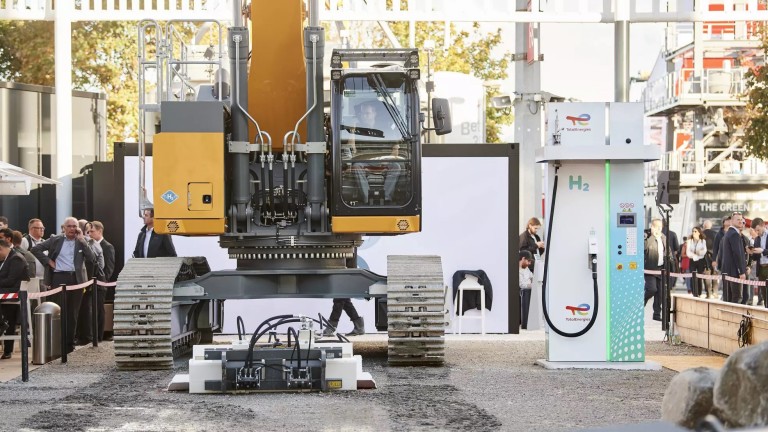In December 2019, the EU Commission presented the ambitious goal of making the European Union climate-neutral by 2050. The current estimated construction value chain accounts for around 36 percent of carbon emissions within the EU, with the vast majority of greenhouse gasses being emitted during the production of building materials, and decades of operating the completed buildings. Nevertheless, to achieve maximum decarbonization and reach the goal, efforts need to be done during the construction phase of new buildings.
High expectations for process optimization
One approach to more climate protection at the construction site is to improve machine efficiency. Joachim Schmid, managing director in the construction machinery and building material plants division at the Mechanical Engineering Industry Association (VDMA), believes that optimizing construction machinery use currently promises a particularly strong impact on achieving climate neutrality.
“As the international construction machinery industry has already been vigorously driving forward this development for decades, for example, through increasingly economical components, much has already been achieved in this regard,” says Schmid.
Opportunities through digitalization and automation
At the bauma 2025 trade fair, the possibilities available through digitalization and automation will be an important topic. Digital solutions allow better machine planning, which helps avoid idle times. Developing sophisticated machine-to-machine communication can ensure more efficient production chains, while smart sensors can monitor the machine status and thus detect increased energy consumption for technical reasons at an early stage.
Schmid points out, “there is also significant potential for reducing carbon dioxide in machine operations,” which is why he says the industry is increasingly relying on digital assistance systems and (partial) automation of processes, in addition to appropriate machine operators training.
Alternative drive concepts as a separate key topic
Another important lever for decarbonization is the development of alternative drive concepts. In addition to the already widespread use of electric motors, many companies and research institutes are also focusing on developing and testing hydrogen-powered construction machinery.
The use of hydrogenated vegetable oil (HVO) also promises great potential for reducing greenhouse gasses. “Because alternative drive concepts are currently so relevant for manufacturers and users, we are dedicating a separate key topic to this technology segment at bauma 2025,” says Nicole Schmitt, exhibition director at bauma.
Getting manufacturers, users, and politicians talking
For the transformation to a climate-neutral construction site to succeed, in addition to new technological developments by machine manufacturers, and construction companies willing to innovate, politicians also need to set the right course. By creating a suitable legal framework, cutting red tape, providing research funding, and establishing guidelines for developing a nationwide supply infrastructure with alternative energy sources, leaders could build the foundation for change. For Nicole Schmitt, “bauma is the ideal platform in that regard for everyone involved to exchange ideas.”
Read the full article here

